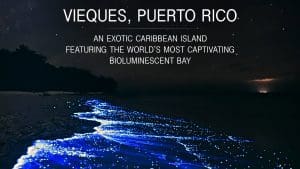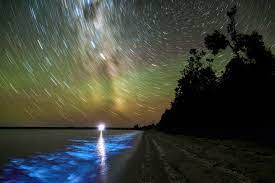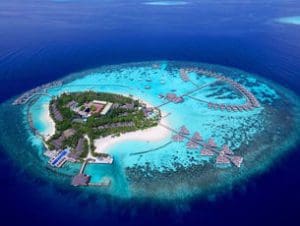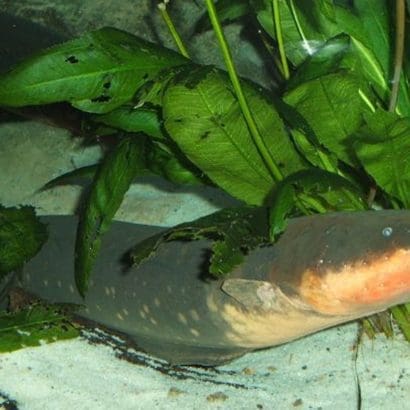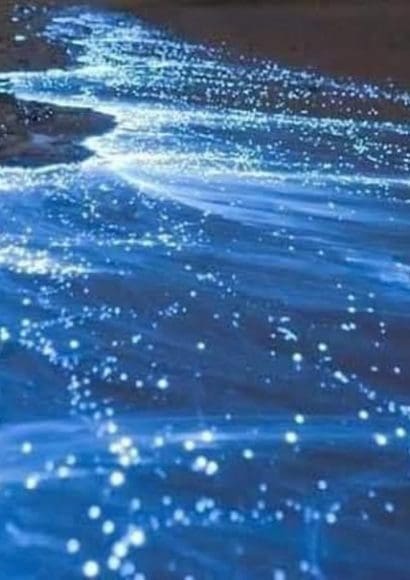
Beaches with bioluminescence offer a surreal and mesmerizing natural phenomenon that captivates both locals and tourists alike. Imagine walking along the shore at night, and with each step, the sand beneath your feet glows and sparkles, creating a magical display of light. This enchanting occurrence is known as bioluminescence, a captivating spectacle caused by living organisms that emit light. If you’re wondering where you can find these extraordinary beaches, you’re in for a treat.
In this article, we will explore some of the most remarkable destinations around the world where beaches with bioluminescence can be found. From the tropical shores of Puerto Rico to the remote islands of the Maldives, get ready to discover the awe-inspiring beauty of these luminous beaches and the natural wonders that create this breathtaking phenomenon. So, let’s embark on a journey to explore the mystical world of bioluminescent beaches and the captivating secrets they hold.
Contents
Explanation of Bioluminescence.
Bioluminescence is a fascinating natural phenomenon that occurs when living organisms produce and emit light. It is a captivating and mesmerizing display found in various marine and terrestrial organisms, ranging from microscopic plankton to deep-sea creatures and even some insects.
The process of bioluminescence involves a chemical reaction within the organism’s body, where specific molecules called luciferins react with enzymes known as luciferases in the presence of oxygen. This reaction produces light energy without generating heat, resulting in the emission of a soft glow or vibrant flashes of light.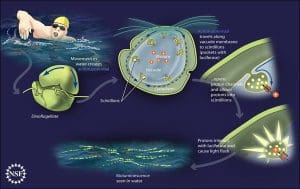
The purpose of bioluminescence can vary among different organisms. For some, it serves as a means of communication, allowing them to attract mates, ward off predators, or signal danger. Others use bioluminescence as a hunting strategy, using the emitted light to lure prey or confuse their predators. In certain cases, it may also function as a defense mechanism, creating a dazzling display that startles or distracts potential threats.
Famous Beaches with Bioluminescence.
These famous beaches with bioluminescence showcase the magical and awe-inspiring wonders of nature. It’s important to note that the intensity and visibility of bioluminescence can vary depending on factors such as the season, weather conditions, and the presence of bioluminescent organisms. Visitors should plan their trips accordingly and be respectful of the fragile ecosystems to ensure the preservation of these natural marvels.
Mosquito Bay, Vieques Island, Puerto Rico:
Mosquito Bay, located on the small island of Vieques in Puerto Rico, is renowned for its extraordinary bioluminescent bay. It is considered one of the brightest bioluminescent bays in the world, attracting visitors from far and wide. The bay is home to high concentrations of bioluminescent dinoflagellates called Pyrodinium bahamense, which emit a vibrant blue glow when disturbed. Kayaking through the bay at night is a popular activity, offering a surreal experience as the water lights up with every paddle stroke.
Gippsland Lakes, Victoria, Australia:
Situated in Victoria, Australia, the Gippsland Lakes are a network of lakes and lagoons that showcase remarkable bioluminescence. The lakes are inhabited by bioluminescent organisms, particularly Noctiluca scintillans, commonly known as the “sea sparkle.” When these organisms are present in large numbers, the lakes emit a captivating bioluminescent display, transforming the water into a luminous spectacle. Nighttime boat tours or walks along the lakes’ shores provide an opportunity to witness this enchanting phenomenon.
Vaadhoo Island, Maldives:
Vaadhoo Island in the Maldives is famous for its breathtaking bioluminescent beaches. The sandy shorelines of Vaadhoo come alive at night, courtesy of a microscopic marine plankton called bioluminescent phytoplankton. These plankton emit a bluish glow, creating an otherworldly scene as the waves wash ashore and the entire beach shimmers with bioluminescence. Walking barefoot along the beach feels like stepping into a starlit wonderland.
Halong Bay, Vietnam:
Halong Bay in Vietnam is renowned for its scenic beauty, but it also offers a unique bioluminescent experience. At night, when the waters are undisturbed, bioluminescent organisms, such as plankton and comb jellies, illuminate the bay. Taking a boat tour or cruising through the bay during the evening allows visitors to witness the captivating spectacle of the glowing waters. The ethereal glow against the backdrop of towering limestone karsts makes for an unforgettable experience.
Other Destinations with Bioluminescence.
These destinations with bioluminescence offer unique and memorable experiences for travelers seeking to witness the natural wonders of our world. It’s important to note that the visibility and intensity of bioluminescence can vary, depending on factors such as the time of year, weather conditions, and the presence of bioluminescent organisms. Travelers should plan their visits accordingly and ensure they adhere to responsible tourism practices to protect these fragile ecosystems.
Faroe Islands:
The Faroe Islands, located in the North Atlantic Ocean, offer captivating bioluminescent displays on their shores. The beaches of Mykines and Tindhólmur are particularly famous for the presence of bioluminescent organisms. When the conditions are right, visitors can experience the magical glow created by these organisms as the waves crash against the rocky coastline.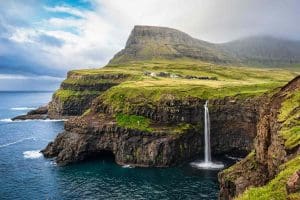
San Juan Bay, Puerto Rico:
San Juan Bay in Puerto Rico is another destination where bioluminescence can be observed. While not as famous as Mosquito Bay, San Juan Bay is known for its incredible bioluminescent waters. Visitors can take a nighttime kayak tour or simply walk along the shoreline to witness the shimmering blue light emitted by the bioluminescent organisms.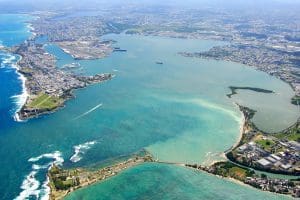
Toyama Bay, Japan:
Toyama Bay in Japan is renowned for its unique bioluminescent phenomenon caused by firefly squid. These small squid species possess light-emitting organs on their bodies, allowing them to produce a mesmerizing blue glow. During their mating season, typically from March to June, the bay comes alive with countless sparkling lights, creating a magical spectacle for visitors.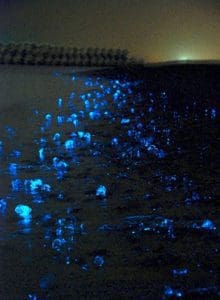
Fajardo Bay, Puerto Rico:
Fajardo Bay, also located in Puerto Rico, offers another opportunity to witness bioluminescence. The bay is known for its concentration of bioluminescent dinoflagellates, creating a captivating light show in the water. Taking a night tour or boat ride through Fajardo Bay provides an immersive experience, with each movement or disturbance in the water resulting in a beautiful display of bioluminescence.
Tips for Visiting Beaches with Bioluminescence.
Research the Best Time to Visit:
Before planning your trip to a beach with bioluminescence, it’s essential to research the best time to witness this natural phenomenon. Bioluminescence can vary throughout the year, depending on factors such as the presence of specific organisms and environmental conditions. Some beaches have specific seasons when bioluminescence is more prominent. By understanding the optimal time to visit, you can maximize your chances of experiencing the captivating glow.
Choose a Dark and Moonless Night:
For the best viewing experience, it’s advisable to visit bioluminescent beaches on dark and moonless nights. Moonlight can diminish the visibility of the bioluminescence, so selecting a night with minimal or no moonlight will enhance your chances of observing the magical glow more vividly. Check lunar calendars or consult local experts to determine the ideal time for your visit.
Seek Remote and Less Polluted Locations:
Beaches with bioluminescence tend to thrive in less populated and less polluted areas. Choose destinations that are known for their pristine and relatively untouched natural environments. These remote locations are more likely to offer clearer waters and higher concentrations of bioluminescent organisms. Avoid areas with heavy light pollution, as it can interfere with the visibility of the bioluminescent glow.
Embrace Patience and Observation:
Witnessing bioluminescence requires patience and keen observation. The glow may not be immediately visible, especially during calm waters or when there’s minimal disturbance. Allow your eyes to adjust to the darkness and take your time to observe the surroundings. Look for gentle waves, ripples, or any movement in the water, as they can trigger the bioluminescent organisms to emit their radiant light.
Respect and Preserve the Ecosystem:
When visiting beaches with bioluminescence, it’s crucial to respect and preserve the delicate ecosystem that supports this phenomenon. Avoid touching or disturbing the organisms in the water, as they play a vital role in maintaining the bioluminescent display. Follow any guidelines or regulations provided by local authorities or tour operators to ensure the sustainability and protection of these natural wonders.
Capture the Moment Responsibly:
If you want to capture the beauty of bioluminescence through photography or videography, do so responsibly. Use low-light or night photography techniques to capture the glow without relying on flash, as it can disrupt the natural ambiance and potentially harm the organisms. Respect any restrictions on the use of artificial lights and prioritize the experience over capturing the perfect shot.
The Importance of Bioluminescent Beaches as Tourist Destinations.
Bioluminescent beaches hold significant importance as tourist destinations, offering a unique and captivating experience for travelers. These natural wonders possess a magical allure that attracts visitors from around the world. As we reflect on the importance of bioluminescent beaches as tourist destinations, several key points come to light.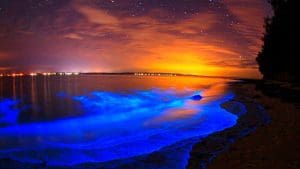
Firstly, bioluminescent beaches contribute to the conservation and preservation of marine ecosystems. Their popularity among tourists raises awareness about the fragility and importance of these habitats. By visiting these beaches, travelers gain a deeper appreciation for the delicate balance of marine life and become advocates for its protection.
Secondly, bioluminescent beaches play a crucial role in promoting sustainable tourism practices. Local communities and governments recognize the economic benefits of these natural attractions and strive to manage tourism in a responsible and sustainable manner. This includes implementing measures to minimize environmental impact, supporting local conservation efforts, and offering educational programs to promote awareness and understanding of the ecosystems.
If you want to learn how this beautiful natural phenomenon occurs and how it impacts marine life, click here.

